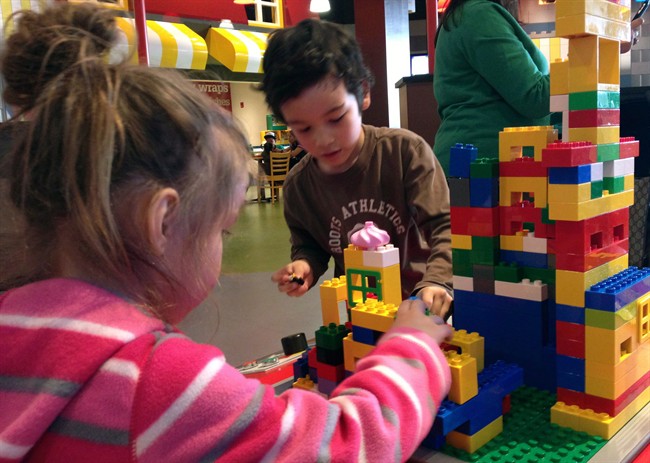You worry about your kids catching a cold from their coughing classmates, but what about the germs on their toys and books in preschool? New research is warning that certain viruses, such as influenza, can thrive on plastic toys for up to 24 hours.

Georgia State University scientists worked with a squeaking toy frog – covering the plastic toy in a virus. Turns out, a day later, they could still pick out enough of the germs to infect kids, they say.
“People don’t really think about getting viruses from inanimate objects. They think about getting them from other people,” the study’s lead author, Richard Bearden II, said in a university press release.
“Children are vulnerable to contracting infectious disease because they put their hands and foreign objects in their mouths, and their immune systems aren’t fully developed,” he warned.
While parents worry about doorknobs or being in close proximity to other kids, the scientists say toys are an “important channel” for transmitting viruses.
READ MORE: How norovirus can bring 600 cruise ship passengers to their knees
In other studies, toys in daycares, doctor’s offices and homes were culprits in causing outbreaks of illnesses.
It’s unclear how long enveloped viruses survive on inanimate objects. These viruses have lipid envelopes, which can work against them because they’re vulnerable to the elements and can die if they don’t infect and attach to something – or someone – soon.
- ‘She gets to be 10’: Ontario child’s heart donated to girl the same age
- Bird flu risk to humans an ‘enormous concern,’ WHO says. Here’s what to know
- Buzz kill? Gen Z less interested in coffee than older Canadians, survey shows
- Canada updating sperm donor screening criteria for men who have sex with men
In this case, the researchers used a virus that infects bacteria. They decided it would best model what the survival of viruses that infect humans would look like.
As time wore on, the amount of virus on the toy frog slowly decreased. By the 10-hour mark, the researchers were still able to recover a small amount of the germs, though.
It wasn’t a lot but the team warns that if “any” virus remains, there’s a risk the kids could become ill.
READ MORE: Why the NHL locker room is the perfect catalyst for a mumps outbreak
“I think the main focus should be for parents, daycare facilities, doctor’s offices and other places where children share toys to implement some type of strategy for decontamination to make sure those toys aren’t a reservoir for disease,” Bearden said.
Disinfect your kids’ toys and include door handles, elevator buttons and other commonly shared surfaces, he advised.
His full findings were published in the Pediatric Infectious Disease Journal.
carmen.chai@globalnews.ca
Follow @Carmen_Chai




Comments